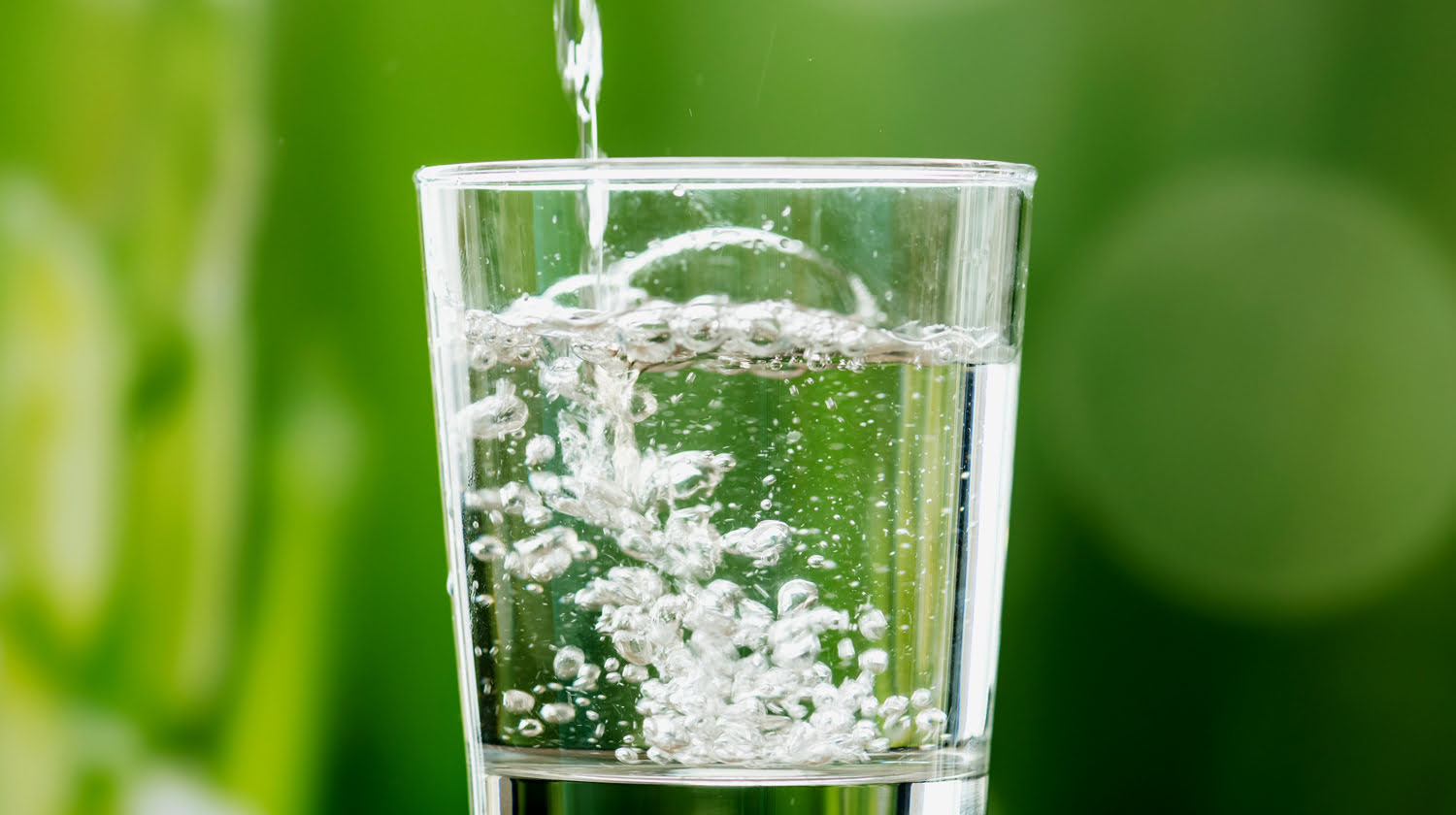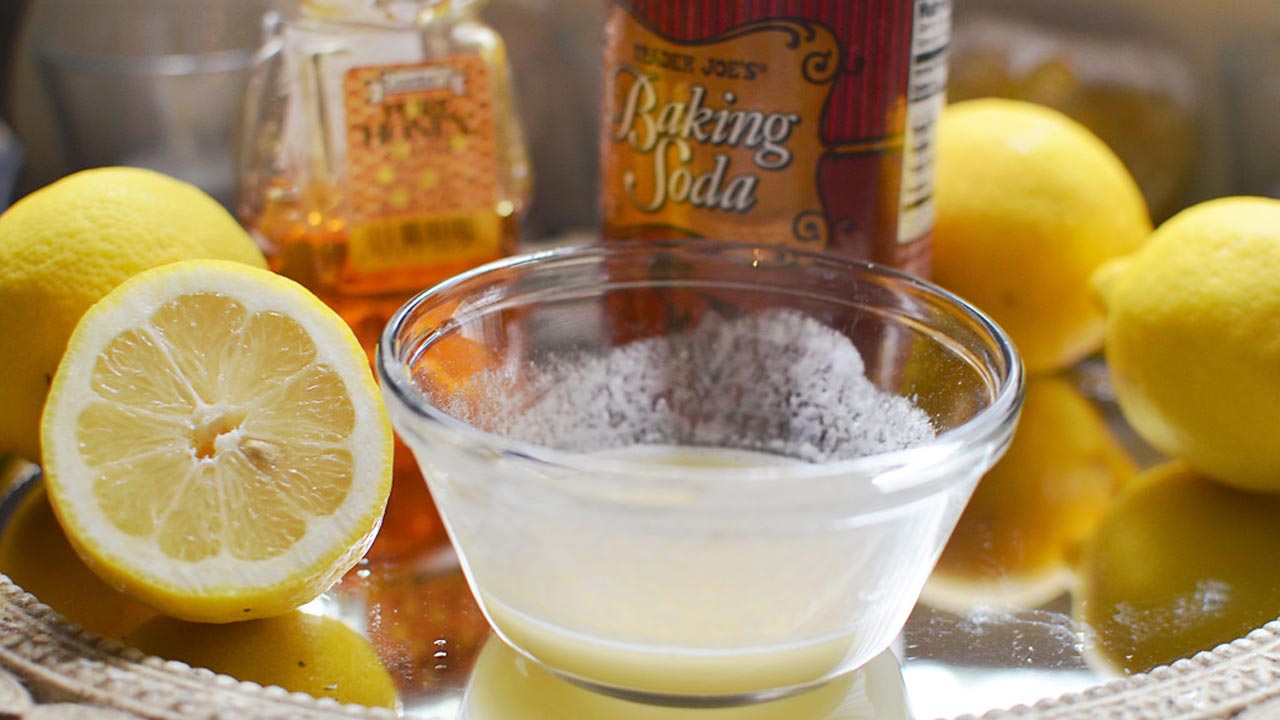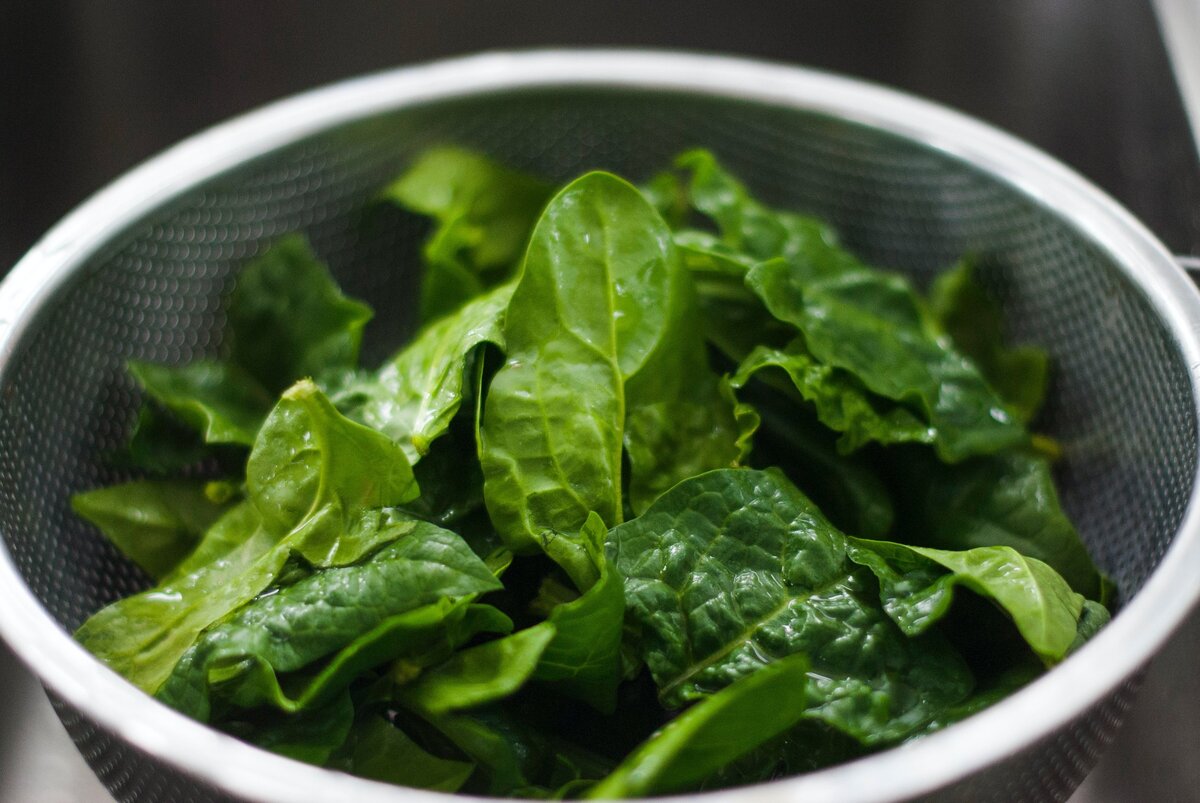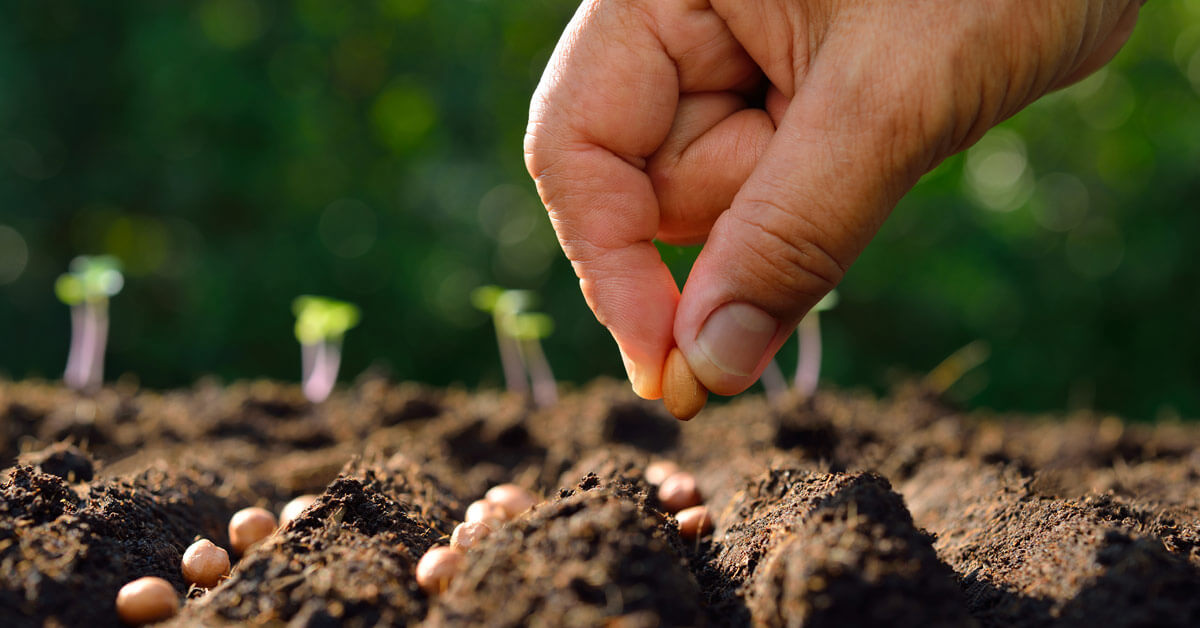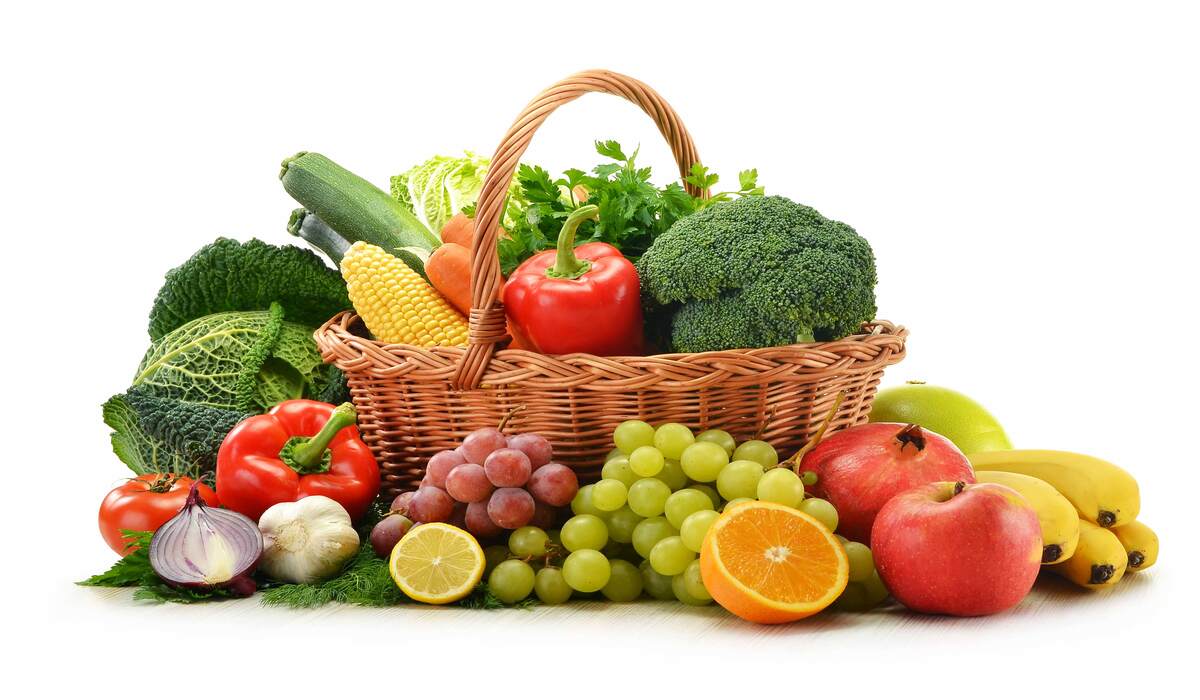Home>Gardening News and Trends>Latest News>How To Clean Fruit And Vegetables From Pesticides
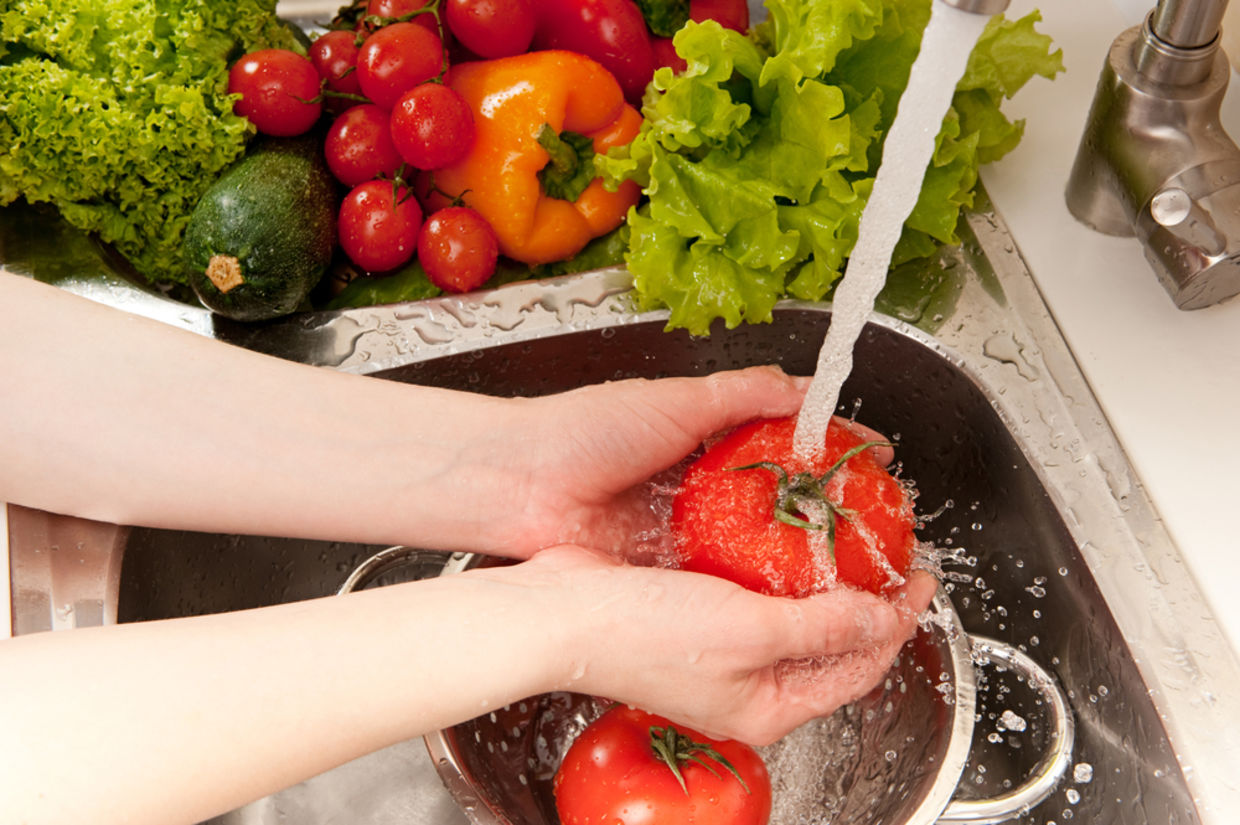

Latest News
How To Clean Fruit And Vegetables From Pesticides
Modified: January 22, 2024
Learn the latest news on how to effectively clean fruit and vegetables from pesticides using simple and safe methods. Keep your produce healthy and toxin-free!
(Many of the links in this article redirect to a specific reviewed product. Your purchase of these products through affiliate links helps to generate commission for Chicagolandgardening.com, at no extra cost. Learn more)
Table of Contents
- Introduction
- Why Cleaning Fruits and Vegetables is Important
- Common Pesticides Found on Produce
- Recommended Cleaning Methods
- Method 1: Washing with Water
- Method 2: Using Vinegar Solution
- Method 3: Using Baking Soda Solution
- Method 4: Using Commercial Fruit and Vegetable Wash
- Method 5: Peeling and Trimming
- Additional Tips and Precautions
- Conclusion
Introduction
Fruits and vegetables are an essential part of a healthy diet, providing us with vital nutrients and antioxidants. However, in today’s modern agricultural practices, the use of pesticides is common to protect crops from pests and diseases. While pesticides are necessary for crop production, they can leave residues on the produce, which can be harmful to our health if consumed in large quantities.
That’s why it is crucial to properly clean fruits and vegetables before consuming them. By doing so, we can remove not only dirt and debris but also reduce the exposure to pesticide residues. Cleaning fruits and vegetables also helps remove potential foodborne pathogens, such as bacteria and viruses, that may be present on the surface.
It’s important to note that washing fruits and vegetables alone may not entirely eliminate all traces of pesticides. Some pesticides can penetrate the skin or have systemic effects, making it challenging to remove them completely. However, proper cleaning can significantly reduce the exposure and lower the risk of consuming harmful residues.
In this article, we’ll explore the importance of cleaning fruits and vegetables, the common pesticides found on produce, and recommended cleaning methods to ensure the health and safety of your fresh produce.
Why Cleaning Fruits and Vegetables is Important
Cleaning fruits and vegetables before consumption is essential for several reasons. Firstly, it helps remove dirt, soil, and other physical contaminants that may be present on the surface. These contaminants can include pesticide residues, bacteria, fungi, and even traces of animal waste. By washing produce, we can reduce the risk of ingesting these potentially harmful substances.
Secondly, fruits and vegetables are exposed to various pesticides during the growth and cultivation process. Pesticides are chemicals designed to kill pests and protect crops from diseases. While they are essential for ensuring a high yield and preventing crop loss, some pesticide residues may remain on the surface of fruits and vegetables, even after they are harvested. These residues can pose health risks if consumed in excess, particularly for children, pregnant women, and individuals with weakened immune systems.
Thirdly, washing fruits and vegetables can also help remove wax coatings or other post-harvest treatments applied to improve appearance and shelf life. While these treatments are considered safe, some individuals may prefer to remove them for personal preferences or dietary restrictions.
Furthermore, washing produce can reduce the risk of foodborne illnesses. Fruits and vegetables can become contaminated with harmful bacteria, such as Salmonella or E. coli, during harvesting, transportation, or improper handling. By washing them thoroughly, we can remove or significantly reduce the number of foodborne pathogens, minimizing the chances of illness.
It’s important to note that different fruits and vegetables can have varying levels of pesticide residues and contaminants. Some produce tends to retain more residues than others, such as strawberries, apples, spinach, and kale. By adopting a habit of proper washing and cleaning, we can minimize our exposure to potentially harmful substances and improve the safety of our food.
Common Pesticides Found on Produce
When it comes to fruits and vegetables, various types of pesticides are commonly used to protect crops from pests and diseases. These pesticides can include insecticides, herbicides, fungicides, and rodenticides. While the use of pesticides is strictly regulated, it’s important to be aware of the potential residues that may be present on our produce.
Insecticides are used to control insects that can damage crops. Common insecticides used on fruits and vegetables include organophosphates, carbamates, pyrethroids, and neonicotinoids. These pesticides help eliminate pests like aphids, caterpillars, and mites.
Herbicides are used to control weeds, which compete with crops for nutrients, water, and sunlight. Glyphosate is a widely used herbicide in agriculture, and it is commonly found in crops such as corn, soybeans, and wheat.
Fungicides are used to prevent and control fungal diseases that can affect the quality and yield of fruits and vegetables. Common fungicides include captan, thiabendazole, and azoxystrobin.
Rodenticides are used to control rodents that can damage crops and spread diseases. These pesticides are typically not directly applied to produce, but they may be present in fields or storage areas.
It’s important to note that the presence of pesticide residues can vary depending on factors such as the specific pesticide used, the crop type, the application method, and the timing of application. Regulations and maximum residue limits (MRLs) are in place to ensure that pesticide residues on food products are within safe levels for consumption.
However, it’s still advisable to take precautions and clean fruits and vegetables thoroughly to minimize exposure to pesticide residues. The next section will explore different methods for cleaning produce effectively.
Recommended Cleaning Methods
Properly cleaning fruits and vegetables can help remove pesticide residues, dirt, and potential pathogens, ensuring that they are safe to consume. Here are several recommended cleaning methods that you can follow:
Method 1: Washing with Water
The simplest and most common method is to wash produce under running water. Gently rub the surface with your hands or use a clean brush to remove dirt and debris. This method can help remove some pesticide residues, but it may not be as effective for pesticides that are more firmly adhered to the surface or have systemic effects.
Method 2: Using Vinegar Solution
A mixture of water and vinegar can be an effective cleaning solution. Mix one part vinegar with three parts water and soak the produce for a few minutes. Then, rinse thoroughly with water. Vinegar can help remove surface contaminants and some pesticide residues.
Method 3: Using Baking Soda Solution
Baking soda is another natural cleaning agent that can be used to clean fruits and vegetables. Create a solution by mixing one teaspoon of baking soda with two cups of water. Soak the produce for a few minutes, then rinse with water. Baking soda can help remove certain pesticide residues and eliminate wax coatings.
Method 4: Using Commercial Fruit and Vegetable Wash
Commercially available fruit and vegetable washes can also be used to clean produce. Follow the instructions on the product label for proper usage. These washes are specifically designed to remove pesticide residues and other contaminants effectively.
Method 5: Peeling and Trimming
Peeling or trimming the outer layer of certain fruits and vegetables can further reduce pesticide exposure, as many residues tend to accumulate on the surface. However, keep in mind that some nutrients, such as fiber and vitamins, are found in the skin, so consider the nutritional value before peeling.
It’s important to note that washing or cleaning produce should be done just before consumption to minimize nutrient loss. Additionally, be cautious when washing delicate fruits, such as berries, to avoid damaging the texture and causing them to spoil more quickly.
By applying these recommended cleaning methods, you can significantly reduce the presence of pesticide residues and ensure that your fruits and vegetables are safer to eat.
Method 1: Washing with Water
Washing fruits and vegetables with water is the simplest and most widely used method for cleaning produce. It is effective in removing surface dirt, debris, and some pesticide residues. Here’s how you can perform this method:
Step 1: Start by thoroughly washing your hands with soap and water to ensure that you don’t transfer any additional contaminants onto the produce.
Step 2: Rinse the fruits or vegetables under cool, running water. Gently rub the surface with your hands or use a clean brush to dislodge any dirt or debris. Ensure that the water is forcefully running to help remove contaminants effectively.
Step 3: Pay special attention to crevices, stems, and leafy greens. For fruits with thick skins, such as apples or oranges, be sure to clean all sides of the fruit, including the areas where your hands may have touched during handling.
Step 4: Once you have thoroughly rinsed the produce, pat them dry with a clean cloth or paper towel. Drying them can help remove excess moisture, which can promote the growth of bacteria and fungi.
While washing with water is a simple and effective method, it may not eliminate all pesticide residues, especially those that have penetrated the skin or have systemic effects throughout the plant. In such cases, using additional cleaning methods may be necessary to further reduce pesticide exposure.
Remember always to wash your fruits and vegetables just before consumption rather than washing them in advance. Washing them in advance can lead to moisture buildup and spoilage. Additionally, avoid using detergents, soaps, or bleach solutions in the water, as these may leave behind residues or be absorbed by the produce.
By following this basic but important method of washing produce with water, you can significantly reduce the presence of dirt, debris, and certain pesticide residues, making your fruits and vegetables safer to consume.
Method 2: Using Vinegar Solution
Using a vinegar solution is a popular and effective method for cleaning fruits and vegetables. Vinegar, specifically white vinegar, is known for its natural cleaning properties and can help remove surface contaminants and some pesticide residues. Here’s how you can use a vinegar solution to clean your produce:
Step 1: Prepare a mixture of one part white vinegar and three parts water. You can use a large bowl or a clean sink to create the solution.
Step 2: Place the fruits or vegetables in the solution and let them soak for approximately 10-15 minutes. This will allow the vinegar solution to effectively break down and remove any dirt, pesticides, or wax coatings.
Step 3: Gently agitate the produce in the solution, ensuring that all surfaces come into contact with the vinegar solution. This will help to dislodge any remaining contaminants.
Step 4: After soaking, remove the produce from the vinegar solution and thoroughly rinse them under running water. Make sure to rinse off any traces of the vinegar solution.
Step 5: Pat dry the fruits or vegetables using a clean cloth or paper towel.
Using a vinegar solution can help remove certain pesticide residues and wax coatings from the surface of fruits and vegetables. However, it is important to note that it may not be as effective for removing all pesticide residues, especially those that have penetrated the skin or have systemic effects throughout the plant. Nevertheless, it can be a safe and natural alternative to commercial fruit and vegetable washes.
Keep in mind that the smell and taste of vinegar may linger on some produce, especially more delicate fruits like berries. If desired, you can give them a final rinse with clean water to ensure no residual taste or odor remains.
This method is particularly beneficial for cleaning fruits and vegetables that have a smooth and firm surface, such as apples, cucumbers, and tomatoes. However, it is important to note that certain fruits and vegetables may react differently to vinegar, altering their texture or taste. Therefore, it is a good idea to test the vinegar solution on a small portion of the produce before proceeding with the entire batch.
By using a vinegar solution, you can effectively reduce surface contaminants and pesticide residues on your produce, providing an extra layer of cleanliness and safety.
Method 3: Using Baking Soda Solution
Using a baking soda solution is another effective method for cleaning fruits and vegetables. Baking soda, also known as sodium bicarbonate, has natural cleansing properties that can help remove dirt, pesticides, and even wax coatings from the surface of produce. Here’s how you can use a baking soda solution to clean your fruits and vegetables:
Step 1: Create a solution by mixing one teaspoon of baking soda with two cups of water. Stir the mixture until the baking soda dissolves completely.
Step 2: Place the fruits or vegetables in a large bowl or clean sink and pour the baking soda solution over them, ensuring that all surfaces are covered.
Step 3: Let the produce soak in the baking soda solution for approximately 15 minutes. This will allow the baking soda to break down any dirt, pesticides, and wax coatings present on the surface.
Step 4: Gently scrub the produce with a clean brush or your hands to further remove any remaining contaminants. Pay particular attention to areas with crevices or uneven surfaces.
Step 5: After scrubbing, rinse the produce thoroughly under running water to remove any traces of the baking soda solution.
Step 6: Pat dry the fruits or vegetables using a clean cloth or paper towel.
The alkalinity of baking soda helps to break down residues, making it effective in removing certain pesticide residues and wax coatings. It can also help neutralize acidic substances that may be present on the produce.
However, it’s important to note that baking soda may not be as effective in removing all types of pesticide residues, especially those that have penetrated the skin or have systemic effects. Additionally, some fruits and vegetables may have a naturally waxy surface that cannot be completely removed by the baking soda solution.
As with other cleaning methods, it is advisable to test the baking soda solution on a small portion of the produce before applying it to the entire batch, especially for more delicate fruits like berries or peaches.
By using a baking soda solution, you can effectively clean your fruits and vegetables, reducing surface contaminants and improving their overall cleanliness and safety.
Method 4: Using Commercial Fruit and Vegetable Wash
Using a commercial fruit and vegetable wash is a convenient and effective method for cleaning produce. These specially formulated washes are designed to remove dirt, wax coatings, and pesticide residues from the surface of fruits and vegetables. Here’s how you can use a commercial fruit and vegetable wash:
Step 1: Read and follow the instructions provided on the product label. Different washes may have specific dilution ratios or application methods, so it’s important to use the wash as directed.
Step 2: Fill a bowl or sink with water according to the instructions. Add the recommended amount of the fruit and vegetable wash to the water and stir gently to ensure it is evenly distributed.
Step 3: Place the produce in the solution and let it soak for the recommended period of time. This allows the wash to effectively break down and remove contaminants.
Step 4: Gently scrub the surface of the produce with a clean brush or your hands to remove any remaining dirt or pesticide residues. Pay attention to areas with crevices or uneven surfaces.
Step 5: Rinse the produce thoroughly under running water to remove any residues of the fruit and vegetable wash.
Step 6: Pat dry the fruits or vegetables using a clean cloth or paper towel.
Using a commercial fruit and vegetable wash can provide an extra level of assurance when it comes to cleaning produce. These washes are specifically formulated to effectively remove contaminants, including pesticide residues, dirt, and wax coatings. They are often made from plant-based or food-grade ingredients, ensuring their safety for both you and the environment.
It’s important to note that some commercial washes may require additional rinsing after usage. Be sure to follow the instructions on the product label to ensure proper usage and removal of any residue.
While using a commercial fruit and vegetable wash can be convenient, it’s always a good idea to be aware of the ingredients used in the product. If you prefer a more natural approach, you may opt for the previously mentioned methods such as vinegar or baking soda solutions.
By using a commercial fruit and vegetable wash, you can effectively clean your produce and enjoy the added peace of mind knowing that they are free from contaminants.
Method 5: Peeling and Trimming
Another method to reduce pesticide exposure on fruits and vegetables is by peeling or trimming them. While this method may not be suitable for all types of produce, it can be effective in reducing pesticide residues, especially those that may have adhered to the surface. Here’s how you can use peeling and trimming as a cleaning method:
Step 1: Thoroughly wash your hands with soap and water before handling the produce.
Step 2: Examine the fruits and vegetables and identify any visible signs of pesticide residues, such as spots, discoloration, or visible dirt.
Step 3: For fruits with thick skins, such as oranges or bananas, you can peel off the outer layer. Ensure that you remove the entire peel and discard it properly.
Step 4: For vegetables with inedible leaves, such as lettuce or cabbage, remove the outer leaves and discard them. The inner layers are typically cleaner and can be consumed after proper washing.
Step 5: For produce with visible dirt, debris, or pesticide residues, you can trim off the affected area using a clean knife or peeler. Make sure to remove a thin layer, including any visibly contaminated parts.
Step 6: Once you have peeled or trimmed the produce, thoroughly wash it under running water to remove any remaining residues or contaminants. Remember to handle the produce with clean hands or utensils during this process.
Step 7: Pat dry the fruits or vegetables using a clean cloth or paper towel.
Peeling and trimming can be effective in removing certain pesticide residues that may have adhered to the surface of fruits and vegetables. However, it’s important to note that some nutrients, such as fiber and certain vitamins, are often found in the peel or outer layers. Consider the nutritional value and the specific produce before deciding to peel or trim it.
It’s also essential to wash the produce thoroughly after peeling or trimming to remove any remaining residues that may have transferred onto the exposed flesh.
While this method may not be applicable to all types of produce, it can be a practical approach to reduce pesticide exposure for fruits and vegetables with thick or removable outer layers.
By peeling or trimming the produce, you can further minimize the presence of pesticide residues on the surface, ensuring a cleaner and safer eating experience.
Additional Tips and Precautions
When it comes to cleaning fruits and vegetables, following some additional tips and precautions can help ensure the effectiveness and safety of the cleaning process. Here are some important considerations to keep in mind:
- Wash all types of produce, including organic and homegrown, as they can still have traces of dirt, bacteria, or pesticide residues.
- Use separate cutting boards and utensils for raw produce and other raw ingredients, such as meat or fish, to avoid cross-contamination.
- Store cleaned produce properly to maintain freshness. Place them in sealed containers or bags in the refrigerator to minimize bacterial growth and retain their quality.
- Consider using a vegetable brush specifically designed for cleaning produce with firm or textured surfaces, such as potatoes, carrots, or cucumbers.
- Remove outer leaves or layers from vegetables, such as lettuce or cabbage, before cleaning to reduce pesticide exposure.
- Be cautious with delicate fruits like berries as excessive washing or rough handling can cause them to spoil quickly. Rinse them gently and consume them promptly.
- Choose locally sourced or organically grown produce when possible, as they may have lower pesticide residues compared to imported or conventionally grown options.
- If you have concerns about pesticide residues, opt for fruits and vegetables with thick peels or skins that are not typically consumed, such as bananas or oranges.
- Keep an eye on recalls or advisories related to specific fruits or vegetables. The FDA or your local health authority can provide information on any potential contamination or safety concerns.
- Pay attention to the water you use for rinsing. If you suspect the tap water may contain contaminants, consider using filtered or distilled water for cleaning your produce.
- Always wash your hands with soap and water before and after handling produce to minimize the risk of spreading harmful bacteria or pathogens.
Remember, while these tips and precautions can help reduce pesticide exposure and ensure the cleanliness of your fruits and vegetables, it’s important to maintain a balanced and varied diet. Consuming a diverse range of fruits and vegetables is essential to obtain a wide range of nutrients and health benefits.
By incorporating these additional tips and precautions into your routine, you can further enhance the safety and quality of the produce you consume.
Conclusion
Properly cleaning fruits and vegetables before consumption is crucial for ensuring their safety and reducing exposure to pesticide residues, dirt, and potential pathogens. While no cleaning method can guarantee the complete removal of all contaminants, adopting the recommended cleaning methods can significantly improve the cleanliness and safety of your produce.
Washing fruits and vegetables with water is the most basic and widely used method. It helps remove dirt and some pesticide residues from the surface. Utilizing a vinegar solution or a baking soda solution can provide additional cleansing power, removing surface contaminants and certain pesticide residues. Commercial fruit and vegetable washes are convenient options designed specifically to effectively remove contaminants from produce.
In some cases, peeling or trimming produce can further reduce the presence of pesticide residues, but it’s important to consider the nutritional value and the specific produce before opting for this method.
By following proper cleaning techniques, maintaining good hygiene practices, and considering additional tips and precautions, you can enjoy cleaner and safer fruits and vegetables.
Remember that the choice of produce plays a role in overall safety as well. Opting for organic or locally sourced options when possible can help minimize pesticide exposure. Additionally, storing cleaned produce properly and consuming it within appropriate time frames can further maintain freshness and reduce the risk of contamination.
While cleaning fruits and vegetables is essential, it’s also important to maintain a balanced and nutritious diet that includes a variety of produce. By incorporating a wide range of fruits and vegetables into your meals, you can enhance your overall health and well-being.
So, the next time you reach for your favorite fruits and vegetables, take a moment to clean them properly, ensuring that you can enjoy their health benefits with peace of mind.
